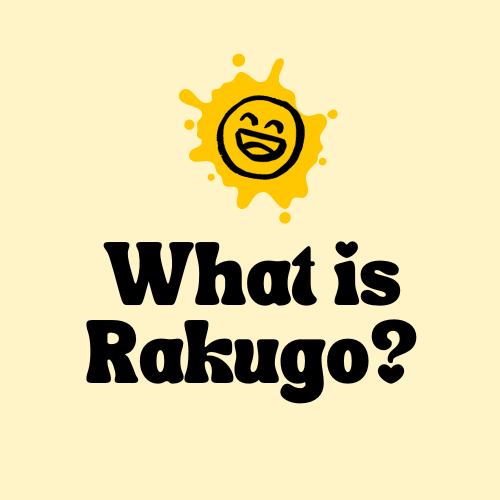As the saying goes, laughter is the best medicine. When a person is feeling down or feeling stressed out, one of the ways for a person to forget about his feelings and worries is by making him or her laugh. To make a person laugh by making jokes or telling a funny story relies on two things: the content itself must be funny, and the delivery must be done in a funny way. Comedians these days use both elements to make their audiences laugh.
In the West, stand-up comedies are popular, but you may not know about sit-down comedies. In Japan, sit-down comedies are part of their culture, and this practice dates back to centuries. Japan may be known as home of manga and anime, but there’s a comedic entertainment called rakugo, which came from the Land of the Rising Sun, too.
Rakugo, the Japanese Art of Storytelling
Rakugo is a traditional Japanese art of storytelling, wherein a lone storyteller (known as the rakugoka) sits on stage and depicts a long and complicated comical story. The term “rakugo” literally translates to “fallen words.” Dressed in a kimono, the rakugoka remains seated throughout the performance, performing a humorous monologue. The rakugoka can only use a fan and a hand towel as props. Since he can’t rely on costumes and scenery, his job is to inspire the imagination of the audience and make them laugh.
The story itself is composed of various characters, all played by the voice of the rakugoka, only varying in pitch, tone, and a slight turn of the head. The punch line, known as the ochi, and an excellent delivery is essential to a successful performance. The ending of the monologue usually contains the ochi (which literally translates to “fall”). There are 12 type of ochi that are codified and recognized by the industry.
It’s like stand-up comedy, minus the standing, walking around, and the large gestures comedians use with their whole bodies.
There are still some traditional vaudeville theaters that host live rakugo performances everyday. It remains as one of Japan’s representative classical arts. It’s common for schools to invite a rakugoka to perform for children studying traditional arts, and most Japanese young adults first experienced watching rakugo at school
Origins of Rakugo
Rakugo developed as a form of entertainment during the Edo Period (1603-1868) in Japan. At first, many different kinds of entertainers perform humorous monologues, but eventually, professionals emerged, who are known as the rakugoka.
Rakugo was initially known as karukuchi. The oldest publication related to rakugo is Seisuishō, which dates back to 1623. The name originally means “laughter to banish sleep.” The term rakugo was first used in 1968, during the Meiji period. The term became more common among the masses during the Showa period in 1926.
As an art form, rakugo was actually conceived by Buddhist monks during the 9th and 10th century. Because their sermons can be quite long, the audience would often get bored and not listen anymore. By doing a comedic form of storytelling, the sermons somehow became more interesting to listeners. As time went by, this form of storytelling evolved from a narrative to monologue. Back then, rakugo was only limited to the upper class who sought different kinds of entertainment.
During the Edo period, rakugo became popular to the lower classes. It was during their time that several performers were established, and their stories became printed.
Elements of Rakugo
Story
One of the most important elements in performing rakugo is the story itself. There’s a canon of more than a hundred traditional stories that are especially written for rakugo performances – some are even 400 years old! The stories can be as short as 10 minutes to as long as 40 minutes, sometimes even longer. Usually, the stories feature funny shenanigans of stock characters typical to the neighborhood life during the Edo Periodin Japan. There are also performers who compose their own stories for their audience to enjoy.
After the rakugo story, the rakugoka can tell a comic monologue, wherein he can say whatever lines he wants to say that will entertain the audience.
Style
There are several styles that have been developed through the years since the first rakugo. It includes:
- Shibaibanashi– theater discourses
- Ongyokubanashi – musical discourses
- Kaidanbanashi – ghost discourses
- Ninjobanashi – sentimental discourses
Rakugoka
Not all who can tell a funny story and deliver it in a funnyway can be a rakugoka. There is training for becoming a professional rakugo storyteller. A person must undergo apprenticeship under a rakugo master for about three to four years, and he or she will only get his stage name from the master. The apprenticeship is strict, and some rules and regulations must be followed. The apprentice alo does the household chores of the master.
Because of the many rules, only those who are serious about becoming a rakugoka must apply for apprenticeship. The apprentice learns by watching his master perform through the years and imitate the master’s actions during the performance. Also, any story can only be performed by a rakugoka once he or she has been granted permission by a master storyteller.
There are three grades of rakugoka:
- Sensa – the lowest level
- Futatsume – the second level
- Shin’uchi – the masters
Once a rakugoka reaches the shin’uchi level, he or she can themselves take on and train an apprentice.
There are still storytellers today who specialize in performing classic rakugo anecdotes first told during the Edo period, which have been passed on from master to apprentice through the years.
